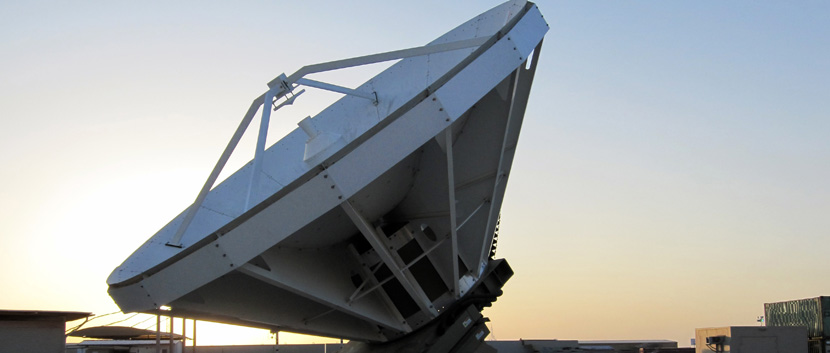
Deployable Ku-band Earth Terminals (DKETs) are commercial non-program of record satellite systems that are designed for use at larger hub locations – such as brigade and higher headquarters elements -- to augment the Army’s unified tactical communications network infrastructure. The versatile DKET can operate on commercial Ku-, Ka and X-band. They are transportable and self-contained, and can establish headquarters-level, network-hub connectivity anywhere a mission dictates. DKETs serve as one of the extra large terminals in Project Manager Tactical Network’s Family of Satellite Communications (SATCOM) Terminals portfolio.
Some of the DKETs take on dual roles as hubs, providing inter- and intra- theater satellite links at brigade and higher, and linking multiple regional command headquarters. DKETs reduce network traffic load on the Army’s five global Regional Hub Nodes by providing network hub services for disadvantaged forward units. They also come in a vehicle-based version, known as a Mobile DKET, or MKET).
DKETs also support other countries, services and agencies world-wide. This support is expanding to include DKETs in fixed locations, the Fixed DKET, or FKET.
The Army’s new Satellite Communications (SATCOM) Terminal Remote Monitor Management Network (STRMM) enables management and control of a DKET from a secure remote location, helping to reduce Field Service Representative footprint.
Capabilities
- Three configurations: DKET Light (3.7 – 3.9M), Mobile DKET (4.5M) and Standard DKET (4.6M – 7M), with the majority being the light design
- Establishes headquarters-level, network-hub connectivity anywhere a mission dictates
- DKETs operate on Ku, Ka and X-band frequencies
- DKET Light has a tri-fold antenna and a smaller shelter to make redeployment and setup faster and easier
- The robust DKET network makes for a seamless transition to backup equipment or terminals, eliminates long outages and minimizes impact to the Soldier
- Transportable and self-contained; electronics housed in separate shelters
- Reduces network traffic load on the Regional Hub Nodes by providing network hub services for disadvantaged forward units